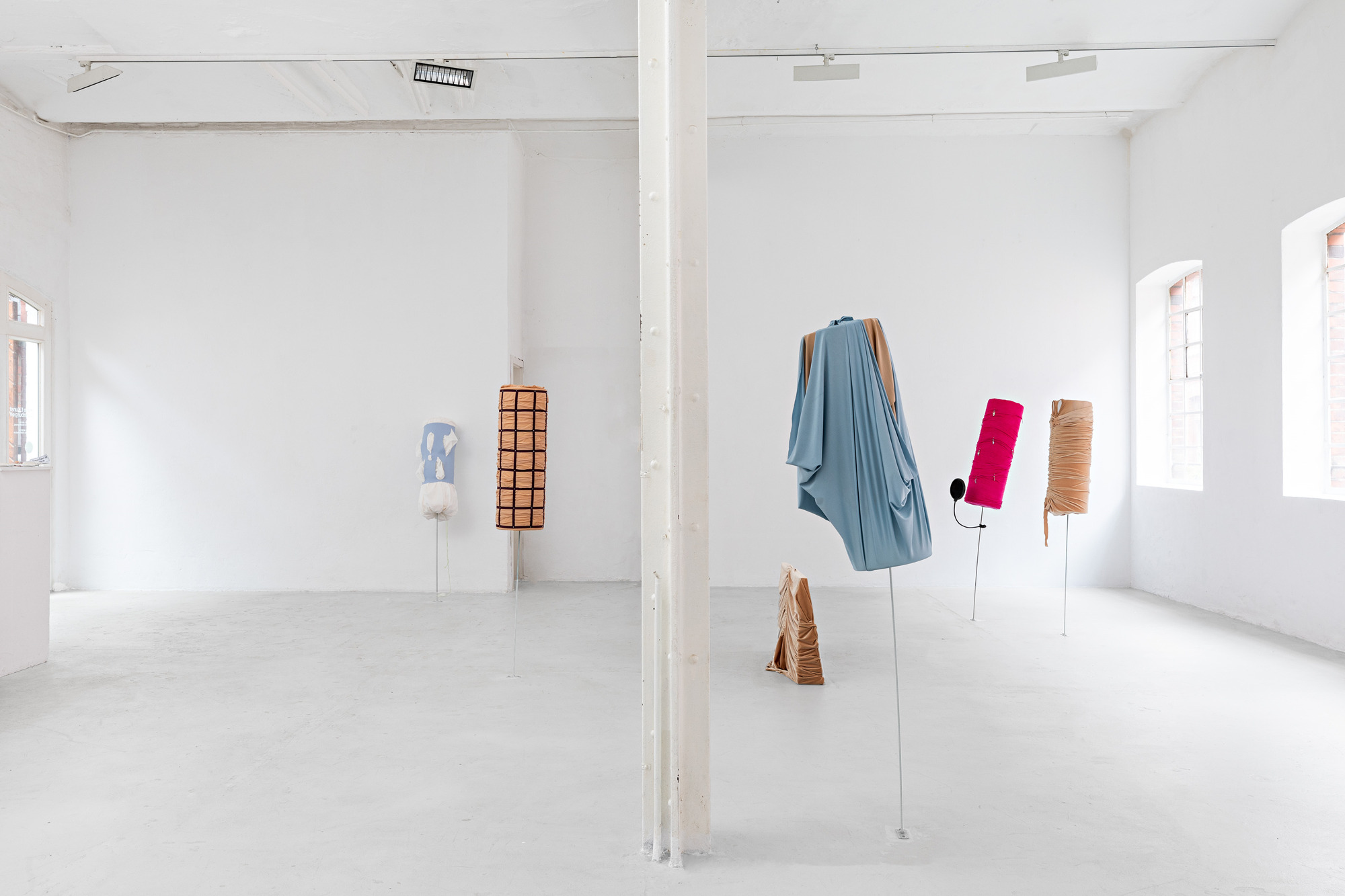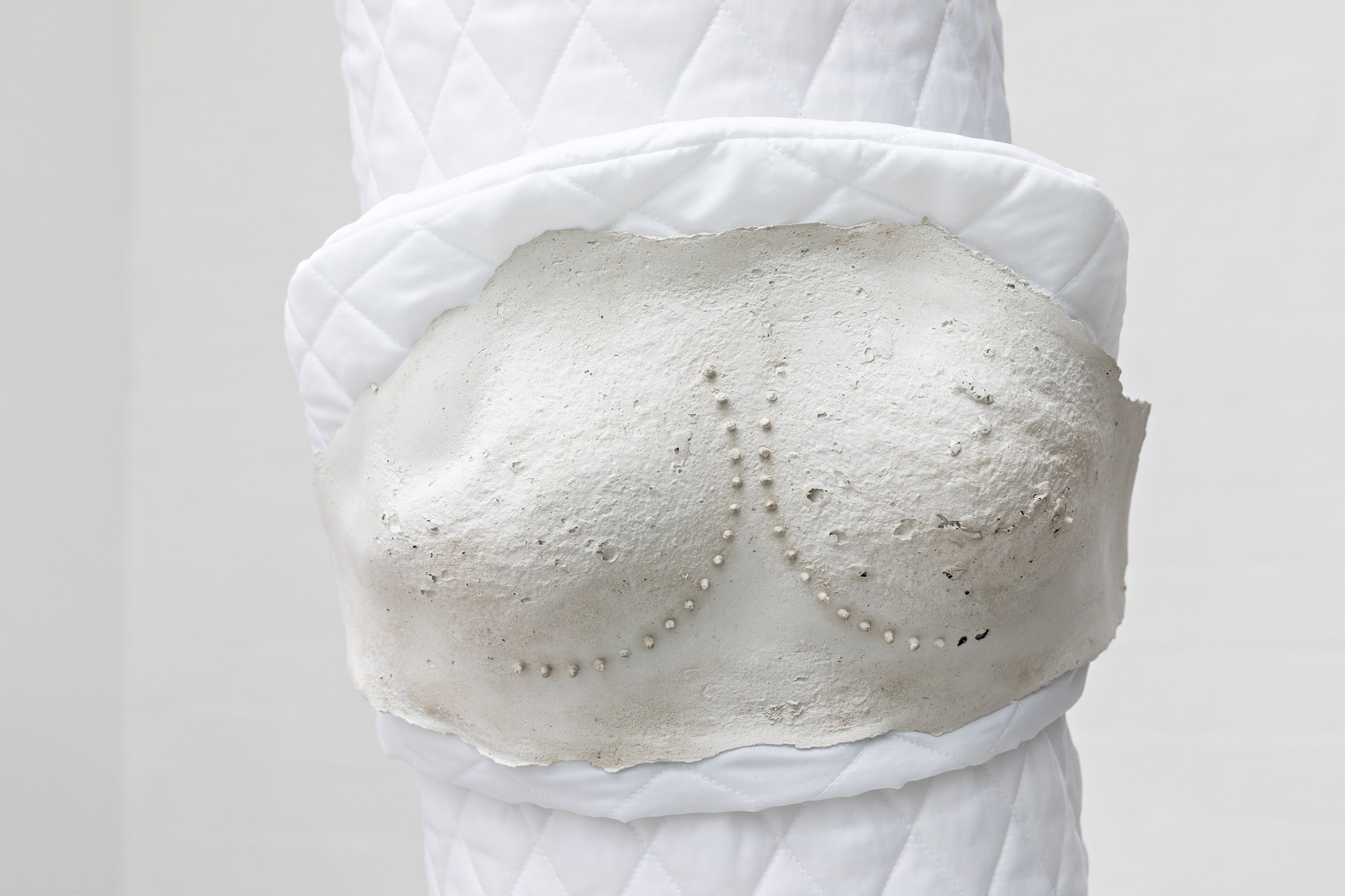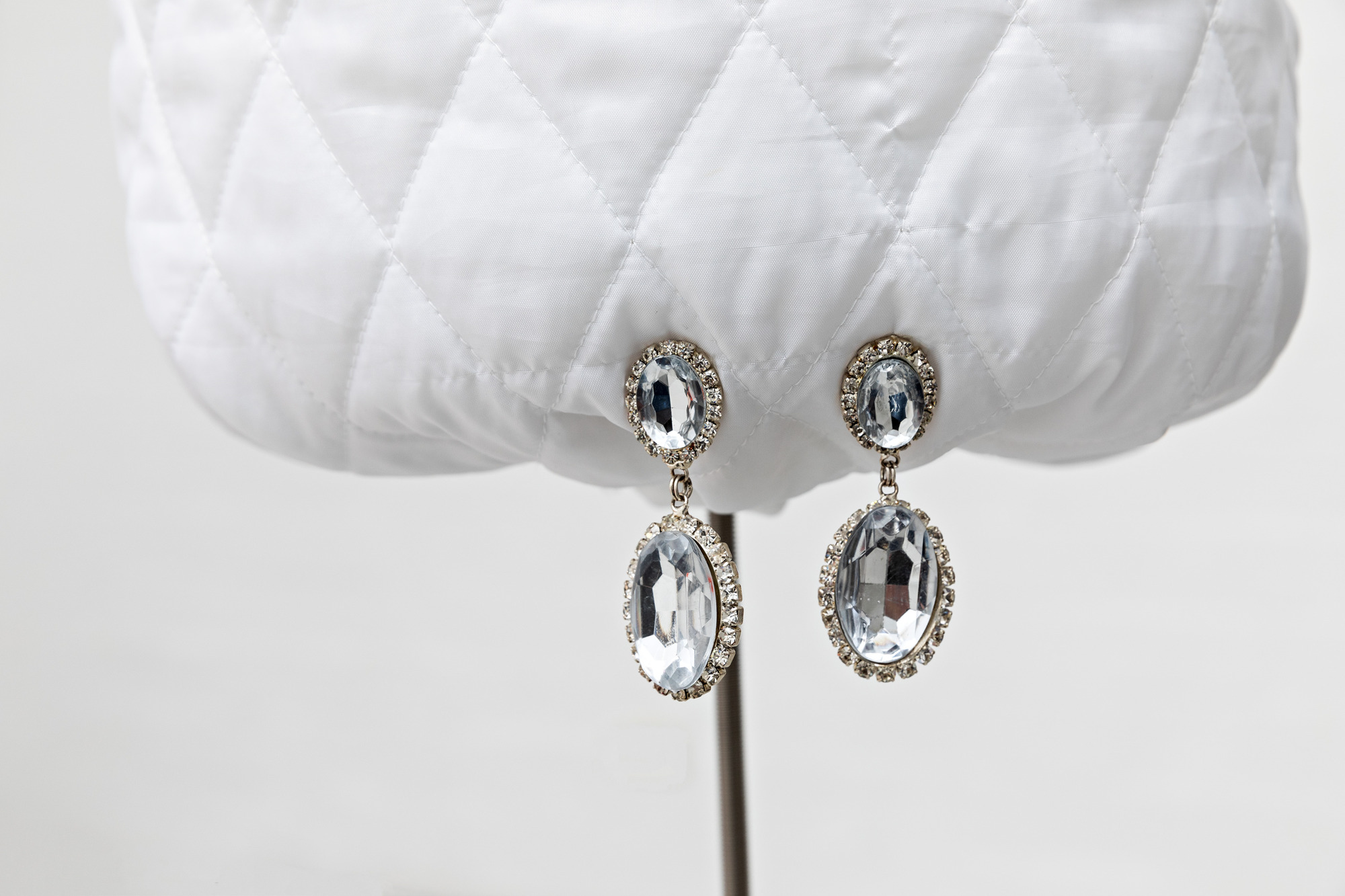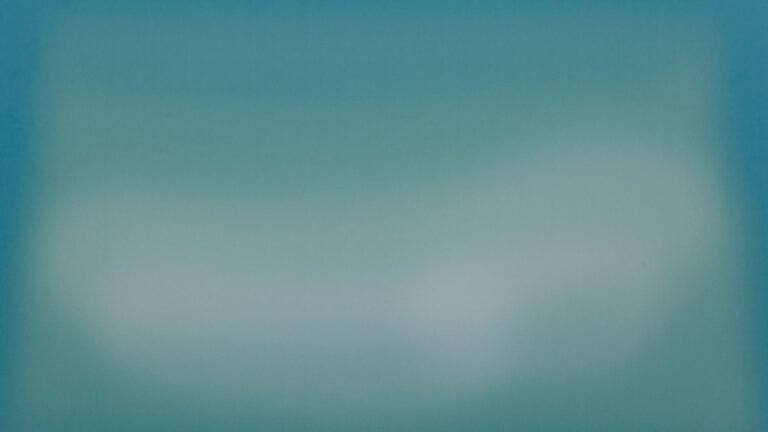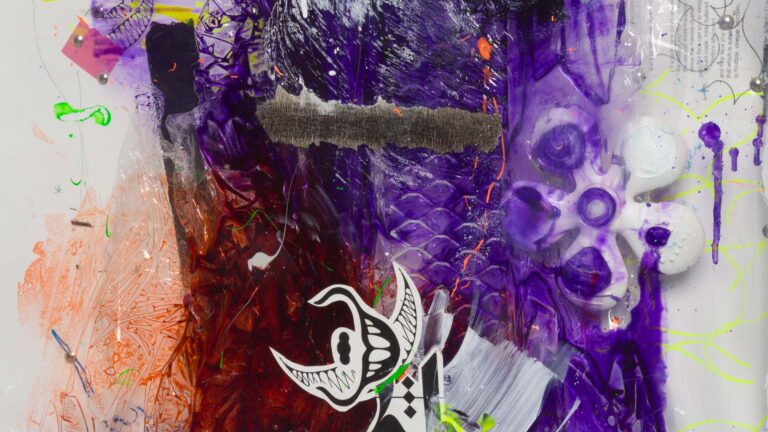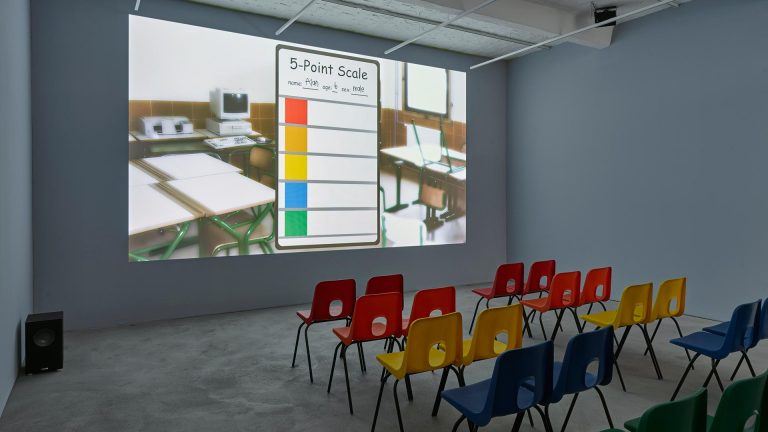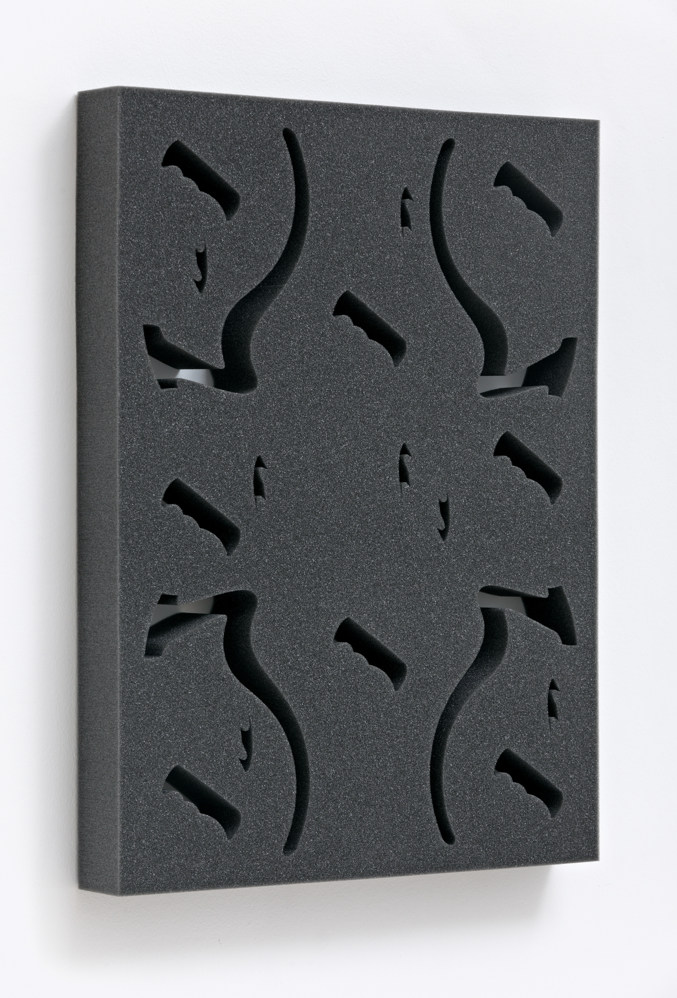Artist: Daphne Ahlers
Exhibition title: Die Langstreckensängerin
Curated by: Stefanie Kleefeld
Venue: Halle für Kunst Lüneburg, Lüneburg, Germany
Date: January 19 – March 29, 2019
Photography: all images copyright and courtesy of the artist and Halle für Kunst, Lüneburg
Perhaps Daphne Ahlers’ works could at first be described as revealing a relation to the body. We see impressions of faces, shapes of female genitalia, or structures that remind one of limbs or body fluids. However, the relation to the body is rather subtle and has to do with the utilized materials that include latex, silicone wads, nylon, or soft shell. With Ahlers, the body is usually not whole but remains a fragment. It is not evoked as an agent or an experiential space located beyond what can be grasped with language in the sense of a mystical or magical experience; and it is also not something that is expanded or altered along the lines of post-humanistic or post-identitary ideas. This is remarkable because especially in the past years the body has experienced quite a revival based on these aspects and potentials and is highly present in contemporary artistic and theoretical discourses.
Even if Ahlers’ works do not celebrate a spectacle of the female body, their background is feminist all the same. And not only for the reason that they address themes like the ban on facesitting in Great Britain, the centuries-long persecution of witches, or new potential contraceptives for men, but also because they are imbued with a fundamental body positivity that extends beyond genders. This affirmation of the body refers to its potential, which Ahlers seeks to fathom, expand and change in her works, for example, by isolating and recontextualizing, belittling or macroscopically focusing on individual body parts so as to undermine fixed definitions and attributions. In this sense, Ahlers is intent not on exploiting but on appropriating and reclaiming bodies in her works.
For her show in Lüneburg, Daphne Ahlers has created a new series of works: Steles made of dressed foam rollers on moveable bars attached to the floor. They may not measure up to »real« bodies, but can indeed be read as personifications of different types. Like in a family constellation—or that of any community—they stand in relationship to each other and cannot be viewed separately. Each of these structures appears to assume a specific spatial position and play a very own roles. But these roles or identities are »dressed«, since the lifeless foam shapes are lent a character only through their outfits. Here, one can glimpse Ahlers’ interest in fashion. But as the title of the exhibition suggests, the moment of failure is also invoked. »Die Langstreckensängerin« (The Long-distance Singer), which as such is already a paradoxical figure, since singing can never last as long as the long distance indicates, is prone to fail all the more in the context of the exhibition, since sound requires a body in order to resonate. The foam bodies, however, swallow any sound and are totally unsuitable as a resonance chamber. The works furthermore deal with self-perception and perception by others, with judgement and the rejection of judgement, with conditions and modes of behavior along with their social and political dimensions, with inertia and instability, and also with the possibilities and impossibilities of avoiding and eluding. Perhaps one could say that Ahlers draws a connection from her earlier interest in the body (fragment) to the body set in relation, which still remains a fragment but additionally forms a social body.
Works by Daphne Ahlers (*1986 Hamburg) have been presented et.al. at Cordova, Barcelona (2018), Braunsfelder Collection, Cologne (2018), Neuer Essener Kunstverein, Essen (2018), Jo Brand, Glasgow (2018), Forde, Geneva (2017), Galleria Acappella, Napoli (2017), Galerie Genscher, Hamburg (2016) and Sandy Brown, Berlin (2015). Als Lonely Boys she has performed together with Rosa Rendl et.al. at Paris Internationale, Paris (2017), Salzburger Kunstverein (2017), Bobs Pogo Bar KW, Berlin (2017), Sandy Brown, Berlin (2017), Skulpturinstitut, Vienna (2015), Halle für Kunst und Medien, Graz (2015) and 3HD Festival, Berlin (2015).













